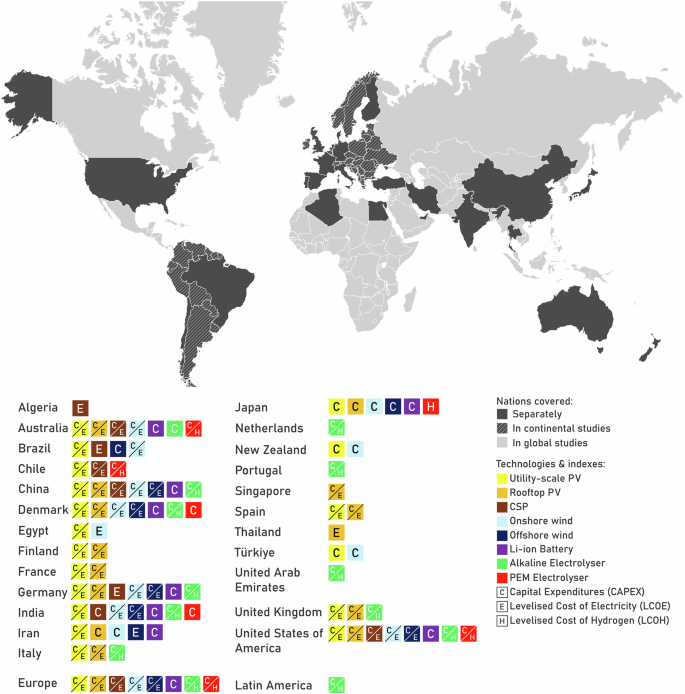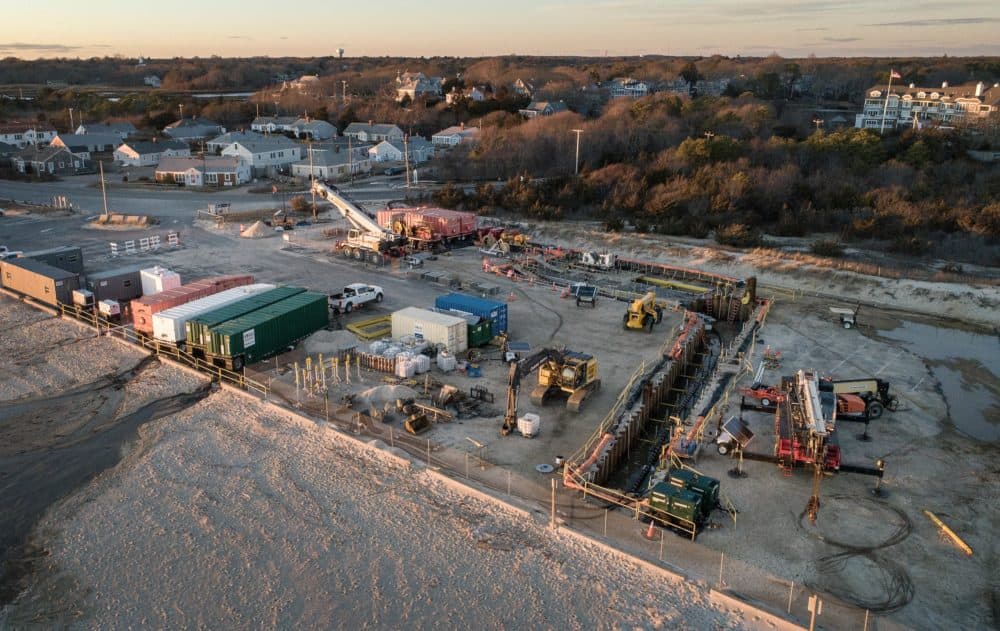Report on the Hull District Heat Network (HDHN) Initiative
The UK government has approved a significant financial package to support the development of the Hull District Heat Network (HDHN), a low-carbon underground heating system. This initiative represents a substantial investment in sustainable urban infrastructure, directly aligning with several United Nations Sustainable Development Goals (SDGs).
Project Scope and Alignment with SDG 11: Sustainable Cities and Communities
The HDHN project is designed to provide heat generated from waste to a variety of public and private buildings across Hull’s city centre. This enhances the city’s sustainability and resilience.
Key Beneficiaries
- Guildhall
- Hull College
- Hull New Theatre
- Council Buildings and Schools
- Private Developments, including Albion Square
- Residential Homes and Businesses
Financial Framework and SDG 17: Partnerships for the Goals
The project is a collaborative effort, funded through a multi-source financial model that exemplifies strong partnerships between national and local government bodies.
Funding Allocation
- A £27 million loan from the National Wealth Fund.
- A £15 million grant from the Green Heat Network Fund.
- £1.5 million allocated from the Levelling Up fund.
The loan is structured to be repaid through the network’s operational revenue, ensuring a sustainable financial model for the infrastructure.
Impact on Climate Action and Energy Sustainability
The HDHN is a cornerstone of Hull’s strategy to address climate change and transition to cleaner energy sources, making direct contributions to key global goals.
SDG 13: Climate Action
The project is projected to have a significant positive environmental impact by substantially reducing greenhouse gas emissions.
- An estimated reduction of 110,000 tonnes of carbon dioxide over a 40-year period.
- Crucially supports Hull’s ambition to achieve carbon-neutral status by 2030 and net-zero emissions by 2045.
SDG 7: Affordable and Clean Energy
By utilizing heat generated from waste, the network provides a cheaper and cleaner alternative to conventional heating methods. This initiative strengthens Hull’s energy security and promotes access to affordable and sustainable energy for its citizens and businesses.
SDG 8 & 9: Decent Work, Economic Growth, and Sustainable Infrastructure
The development of the HDHN is a major advancement in sustainable infrastructure (SDG 9). Furthermore, the project is anticipated to stimulate the local economy through the creation of green jobs, contributing to decent work and economic growth (SDG 8) within the region.
Analysis of Sustainable Development Goals (SDGs) in the Article
1. Which SDGs are addressed or connected to the issues highlighted in the article?
SDG 7: Affordable and Clean Energy
- The article focuses on a “low-carbon underground heating system” that provides a “cheaper, cleaner alternative” to traditional heating. This directly relates to ensuring access to affordable, reliable, sustainable, and modern energy.
SDG 8: Decent Work and Economic Growth
- The project is mentioned to create “more green jobs,” which contributes to promoting sustained, inclusive, and sustainable economic growth, full and productive employment, and decent work for all.
SDG 9: Industry, Innovation, and Infrastructure
- The development of the Hull District Heat Network (HDHN) is a clear example of building resilient infrastructure and promoting sustainable industrialization. It involves a significant upgrade of the city’s energy infrastructure with a “low-carbon” and innovative solution.
SDG 11: Sustainable Cities and Communities
- The project is a city-level initiative by Hull City Council aimed at making the city more sustainable. It addresses urban environmental challenges by improving “air quality” and providing sustainable services to “buildings across the city centre,” including public buildings, schools, homes, and businesses.
SDG 13: Climate Action
- The core purpose of the project is to combat climate change and its impacts. The article explicitly states the project is expected to “cut 110,000 tonnes of carbon dioxide” and is a major step in Hull’s goal to become “carbon-neutral by 2030 and net zero by 2045.”
2. What specific targets under those SDGs can be identified based on the article’s content?
SDG 7: Affordable and Clean Energy
- Target 7.2: By 2030, increase substantially the share of renewable energy in the global energy mix. The project uses heat “generated from waste” and is described as a “cleaner alternative,” which contributes to increasing the share of non-fossil fuel energy sources.
- Target 7.3: By 2030, double the global rate of improvement in energy efficiency. District heating networks are inherently more energy-efficient than individual heating systems, thus contributing to this target.
SDG 8: Decent Work and Economic Growth
- Target 8.2: Achieve higher levels of economic productivity through diversification, technological upgrading and innovation… The article mentions the creation of “more green jobs,” which aligns with promoting economic productivity through innovation in the green technology sector.
SDG 9: Industry, Innovation, and Infrastructure
- Target 9.4: By 2030, upgrade infrastructure and retrofit industries to make them sustainable, with increased resource-use efficiency and greater adoption of clean and environmentally sound technologies. The HDHN is a direct implementation of this target, upgrading Hull’s heating infrastructure with a clean, low-carbon technology.
SDG 11: Sustainable Cities and Communities
- Target 11.6: By 2030, reduce the adverse per capita environmental impact of cities, including by paying special attention to air quality and municipal and other waste management. The project directly addresses this by using waste to generate heat and improving the city’s air quality by cutting carbon dioxide emissions.
SDG 13: Climate Action
- Target 13.2: Integrate climate change measures into national policies, strategies and planning. The Hull City Council project, supported by government funding, is an example of integrating climate change mitigation measures into local-level planning and strategy to achieve carbon neutrality.
3. Are there any indicators mentioned or implied in the article that can be used to measure progress towards the identified targets?
SDG 7: Affordable and Clean Energy
- Implied Indicator: The article mentions the project provides a “cheaper” alternative, implying that the cost of energy for consumers (council buildings, schools, homes, and businesses) can be measured as an indicator of affordability.
SDG 8: Decent Work and Economic Growth
- Implied Indicator: The statement that the project “creates more green jobs” implies that the number of new jobs created in the green sector due to this project is a measurable indicator.
SDG 11: Sustainable Cities and Communities
- Specific Indicator: The improvement in air quality can be measured by the reduction of carbon dioxide. The article provides a specific figure: a cut of “110,000 tonnes of carbon dioxide… over 40 years.”
SDG 13: Climate Action
- Specific Indicator: The primary indicator for climate action is the reduction of greenhouse gas emissions. The article quantifies this as “110,000 tonnes of carbon dioxide” over the project’s lifespan.
- Specific Indicator: The city’s own targets, “carbon-neutral by 2030 and net zero by 2045,” serve as long-term progress indicators that this project contributes to.
4. Summary Table of SDGs, Targets, and Indicators
| SDGs | Targets | Indicators |
|---|---|---|
| SDG 7: Affordable and Clean Energy | 7.2: Increase the share of renewable energy. 7.3: Improve energy efficiency. |
Implied: Cost savings for consumers (“cheaper alternative”). |
| SDG 8: Decent Work and Economic Growth | 8.2: Achieve higher levels of economic productivity through innovation. | Implied: Number of “green jobs” created. |
| SDG 9: Industry, Innovation, and Infrastructure | 9.4: Upgrade infrastructure with clean and environmentally sound technologies. | The implementation of the “low-carbon underground heating system” itself. |
| SDG 11: Sustainable Cities and Communities | 11.6: Reduce the adverse per capita environmental impact of cities (air quality, waste management). | Specific: Reduction of 110,000 tonnes of carbon dioxide over 40 years. |
| SDG 13: Climate Action | 13.2: Integrate climate change measures into policies, strategies and planning. | Specific: Contribution towards Hull’s goal to be “carbon-neutral by 2030 and net zero by 2045.” |
Source: bbc.com






